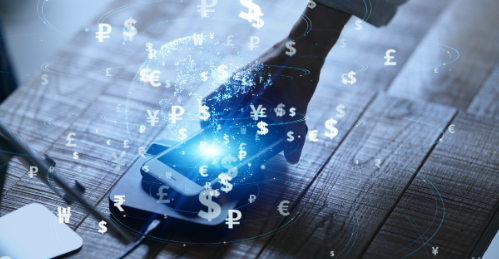The payments sector is always changing, and 2025 is looking to be a year of big innovation and transformation. Behind the scenes, payments get increasingly complicated as they become more frictionless.
While customers may quickly scan, voice-command, and tap their way through transactions, the infrastructure enabling these experiences has evolved into a complex ecosystem of blockchain networks, machine learning algorithms, and real-time risk assessments. The largest firms in the fintech sector are expected to concentrate on improving consumer convenience, security, and personalization of payments this year.
In this blog, we will be discussing all the latest trends in the transactions in 2025. From the rise of digital wallets and the growing popularity of cryptocurrencies to the growing importance of data security and the evolving role of artificial intelligence, we will cover all the most recent developments in the payments sector for 2025 as well as the major issues impacting changes in business and payment practices.
New Ways of Transactions of 2025 that make life easier —
1. The Growing Need for Payment Personalization:
The focus on personalization continues to be a crucial trend in the changing payments landscape, one that is expected to define 2025.
Companies are adjusting their payment procedures in response to customer desire for personalized experiences. In order to maximize operational effectiveness, improve privacy, and eventually increase client acquisition, this change seeks to smoothly connect payments with consumer purchases.
Hyper-personalization can help achieve the increasingly important goal of customer-experience transformation. The emphasis on customized client journeys in finance becomes critical as companies use data-driven strategies.
Access to item-level data serves as a catalyst, allowing for more customized payment experiences that have a deeper impact on customers. This trend aims to create a smooth, user-centric approach that fits with changing consumer preferences rather than just making payments convenient.
2. Voice and biometric payments:
In relation to biometric verification… Your body will serve as your password in the future; consider facial recognition, fingerprint scanning, and perhaps iris scanning. Payments are becoming safer and easier thanks to biometric authentication.
In the meantime, voice recognition is becoming a viable hands-free method of transaction authorization. Imagine using a voice command to confirm a payment while driving or preparing dinner. These solutions are more accessible and precise because of advancements enabled by AI, serving a wider spectrum of consumers.
Here, security is a major motivator. When paired with conventional authentication techniques (such as PINs or one-time passwords), biometric data provides an excellent security barrier because it is extremely difficult to counterfeit.
3. E-payments:
Physical cash? It’s not dead yet, but it’s definitely on life support. From e-wallets to electronic fund transfers, digital payments are the new normal. And it’s not just about speed, many e-payment methods come with perks like cashback, rewards, and instant transfers.
In the EU, initiatives like the Single Euro Payments Area (SEPA) are making cross-border transactions as seamless as domestic ones. That means whether you’re buying coffee in Berlin or booking a hotel in Barcelona, e-payments are making life (and business) a whole lot easier.
While the shift toward digital payments is undeniable, cash may be making a comeback. Especially in times of geopolitical uncertainty. Sanctions, cyber threats, and regulatory shifts can disrupt digital networks in an instant. When that happens, cash serves as a reliable fallback. So, perhaps we shouldn’t count it out just yet.
4. Buy Now, Pay Later (BNPL):
Financial liberty combined with instant gratification. With the opportunity to divide purchases into interest-free payments, Buy Now, Pay Later (BNPL) services are becoming increasingly popular. BNPL is making expensive purchases more affordable, whether you’re planning a trip, buying clothes, or even paying for medical bills.
The embedded lending market is anticipated to increase at a compound annual growth rate (CAGR) of 19.6% during the forecast period, according to Future Market Insights. The market value is anticipated to soar from $7.7 billion in 2024 to an astounding $45.7 billion by 2034, underscoring the growing need for industry-wide integrated financial solutions.
Millennials and Gen Z in particular are the younger consumers who are pushing the uptake of BNPL services. According to a 2024 PYMNTS poll, 47% of millennials and nearly 50% of Gen Z utilized BNPL in the previous 12 months. Paycheck-to-paycheck consumers are more than twice as likely to use BNPL as non-paycheck-to-paycheck consumers, according to PYMNTS.
Retailers also adore it. BNPL benefits both customers and businesses by raising average order values and conversion rates. To guarantee appropriate lending practices, increased regulatory control is anticipated as its popularity rises.
5. Open Banking, Blockchain, and Cryptocurrency:
Digital assets and blockchain are emerging from the hype into commonplace payment systems, especially for international and business-to-business transactions. Digital transactions that are safe, quick, and less expensive are promised by cryptocurrencies and central bank digital currencies (CBDCs). At the same time, open banking enables users to safely exchange financial information with outside providers using APIs, resulting in “pay-by-bank” schemes, customized payment methods, and more affordable service options.
Key Impacts:
- Blockchain technology expedites and secures high-value, cross-border transactions.
- CBDCs offer low-cost, government-backed digital currency.
- Customized services and safer, quicker payment improvements are made possible by open banking.
Conclusion
As the digital age progresses, the payments landscape is expected to evolve, redefining not only how people trade money but also how companies engage with their customers. Real-time transactions, artificial intelligence, and embedded finance are some of the technologies driving the quick evolution of payment systems, which offers previously unheard-of chances for innovation and expansion.
Businesses may provide more safe, effective, and customized payment experiences that satisfy the demands of today’s tech-savvy customers by adopting these innovations. But remaining ahead of the curve necessitates a deliberate dedication to modernizing payments, ongoing adjustment to new trends, and an emphasis on providing easy-to-use and seamless solutions. Those who place a high priority on modernization will be well-positioned to prosper in a future where speed, security, and convenience are paramount.
